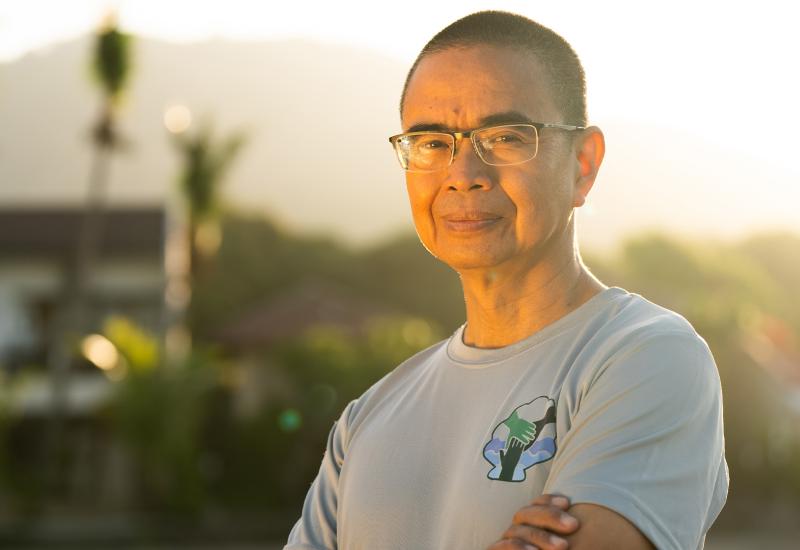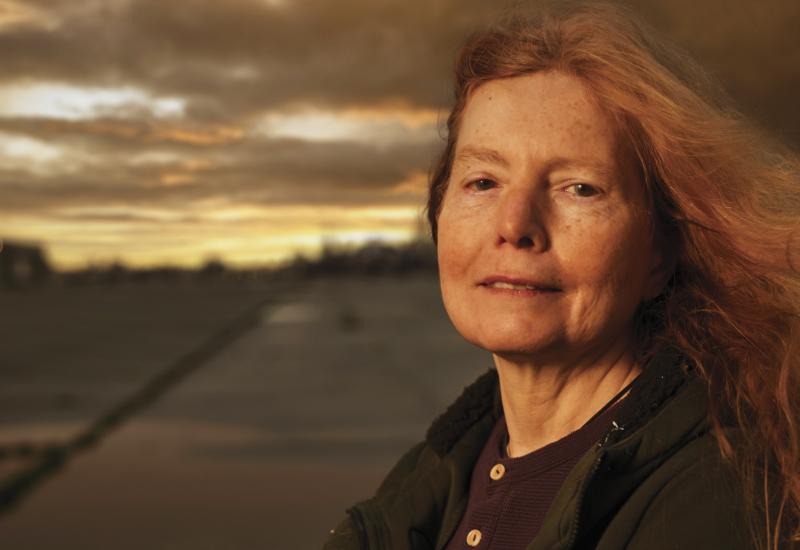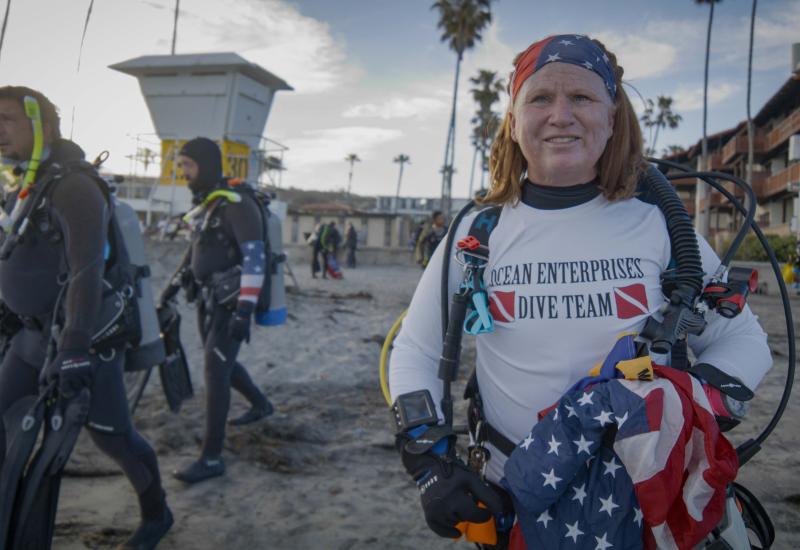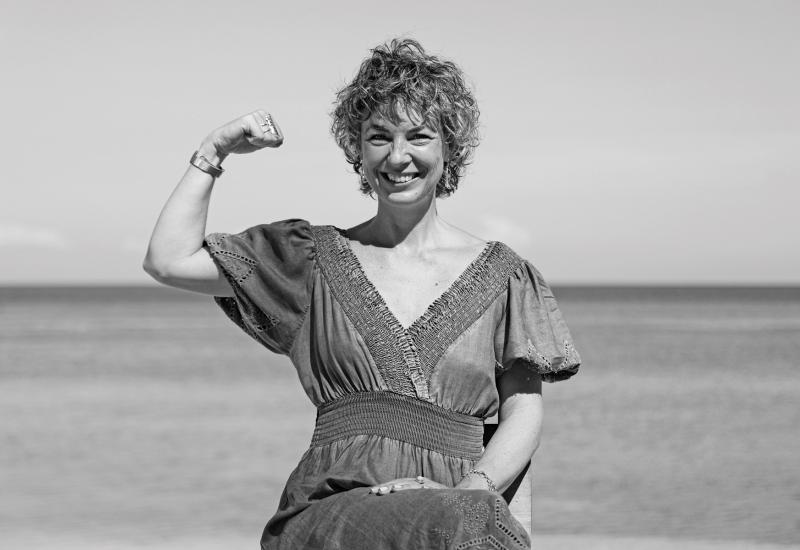Anesti Vega Awarded Sea Hero Honors for Diversity in Aquatics
YEAR DIVE CERTIFIED: 2013
AGE WHEN CERTIFIED: 31
DIVE CERTIFICATION LEVELS: PADI IDC Staff Instructor; Diveheart Adaptive Scuba Instructor
WORDS TO LIVE BY: “Many of us ask, ‘What can I, as one person, do?’ But history shows us that everything good and bad starts because somebody does something or does not do something.” —Dr. Sylvia Earle
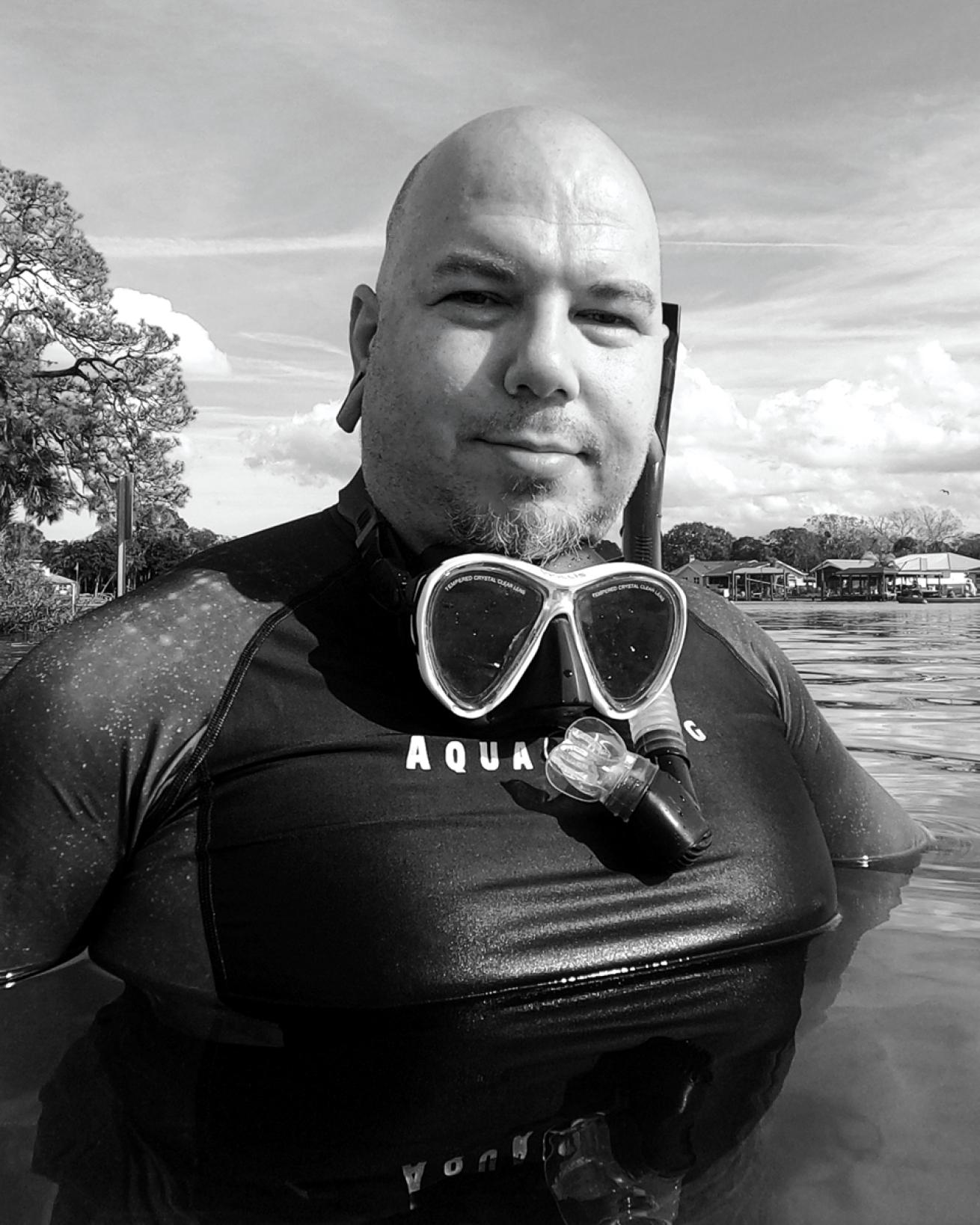
Crystal GalindoAnesti Vega
Anesti Vega is on a mission to expand the accessibility of diving and ocean exploration. Experiencing neutral buoyancy for the first time was a turning point in the PTSD recovery of the veteran, who threw himself into helping others experience scuba’s healing power. As chair of the Scuba Council of the nonprofit Diversity in Aquatics, the Indigenous change-maker approaches swimming through the lenses of social justice and public health to empower communities underrepresented in aquatics with the skills necessary to be safe in and around water. For Vega’s dedication to meeting anyone wherever they are in their water journey, he is our August Sea Hero.
Q: Diversity in Aquatics (DIA) approaches water skill-building as a public safety and health issue. Low-income children are far more likely to drown in the United States, and globally most drownings take place in low and middle-income countries. How does that shape your work as its Scuba Council Chair?
A: DIA provides a comprehensive understanding of scuba within the larger context of water safety. It helps me identify the barriers to scuba, allowing me to meet people and communities at their water comfort level. Scuba diving can seem like an abstract concept without first establishing a fundamental sense of water safety and comfort. It’s important to first address that foundation to create pathways to access.
Q: In the U.S., some racial disparities in aquatics are rooted in decades of cultural attitudes and public policies that reduced access to water for people of color. Given that the effects of these policies linger today, what societal changes do you think could address this root disparity, and how can individuals contribute?
A: I am always inspired by the people and organizations that have and continue to identify and address these larger historical and current disparities such as segregation, redlining, economic disenfranchisement and displacement — work that I’ve had the pleasure to discuss recently with Dr. Sylvia Earle and Liz Taylor on their web series “Dive In.” I always recommend that, on an individual level, people step outside their bubble to build cultural competence outside of familiar circles. This helps to break down pre-conceived notions and biases, eventually leading to advocacy for equitable policy changes. That has a rippling effect on all aspects of society, including aquatics.
Are you ready to step up, help save the ocean, and #LiveUnfiltered at the same time? Sign up for a PADI Open Water Diver course now.
Q: What are some changes you think need to be made within the dive industry specifically to make it more accessible? How do those happen?
A: One of the easiest and more immediate steps that can and are being taken is a stronger visual representation of diversity within promotional and training materials. An authentic approach to these steps creates a more welcoming environment where people of marginalized communities can see themselves reflected in the window posters of a scuba shop, in the photos of training books and in eLearning materials. This leads to a richer diversity of who is helping to pick out gear, training them for certification, and even owning scuba shops that will perpetuate a deep sense of belonging for all people becoming lifelong scuba divers.
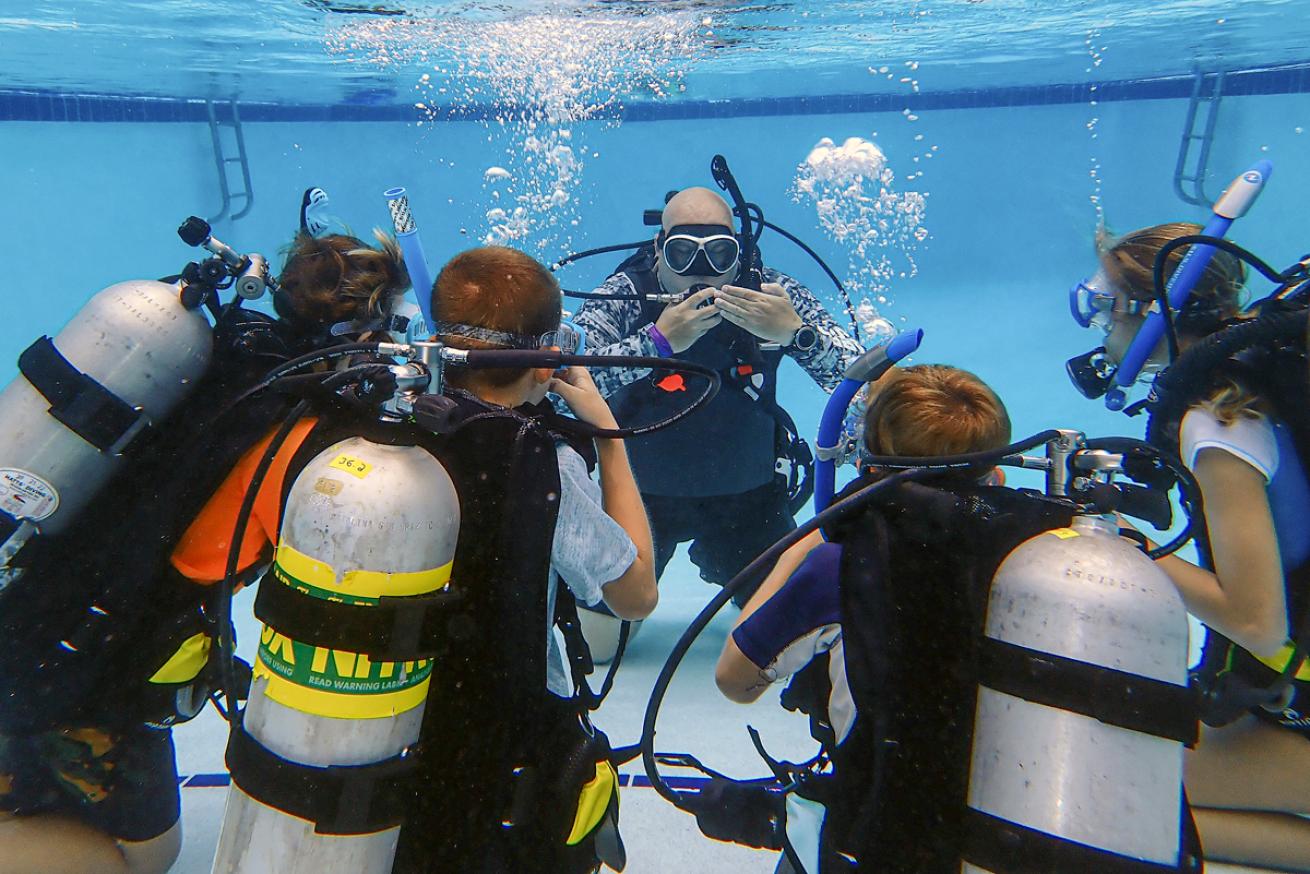
Geo VegaA class learns from Vega how to breathe after clearing a regulator.
Q: One of the goals of the Scuba Council is to expand the ways people can get involved in the sport. What are some of the on-ramps you’ve helped build, and why do you think they’re effective?
A: One of the top barriers for getting involved in scuba diving is the overall cost. The council focuses on addressing this barrier through partnerships and consulting with organizations like the AAUS Foundation and Reef Check Foundation to build culturally-competent scholarship opportunities. These facilitate access to fundamental training and equipment, as well as advanced training in citizen science and scientific diving that that could unlock an entire career path.
Q: Speaking of creating opportunities for people to dive: You have been involved in numerous efforts to get veterans involved in diving, from starting a nonprofit to collaborating with DIA Veteran’s Council. What drove you to create pathways for veterans to use diving skills in the real world?
A: At the core of working with veterans like myself, is helping us lead healthier lifestyles. Research is repeatedly documenting the therapeutic effects of scuba, which is being used to address mental health disparities like PTSD and anxiety that are all too prevalent within our military communities. This work also creates opportunities to use their scuba and military skills to further STEM research and ocean conservation efforts. Finding a sense of purpose after military service profoundly impacts our sense of self-worth and belonging, which is known to curve depression and suicide.
Q: On the topic of conservation, your PADI AWARE profile mentions you take “an Indigenous approach to ocean stewardship and conservation leadership.” Can you explain how that differs from mainstream approaches, and what you find it adds to your work?
A: Taking an Indigenous approach to these concepts for me means centering the validity of ancestral bodies of scientific knowledge that have been developed over tens of thousands of years. These are still practiced and implemented today by Indigenous communities to be sustainable stewards of lands and coastlines. Science absolutely needs to drive conservation efforts, but western science has a fraught history of being utilized to negate the value of scientific observations and discovery by the original stewards of colonized lands and to justify racial supremacy that continues to impact society today.
Utilizing a culturally-competent approach to all the knowledge that exists — including Indigenous knowledge, traditional practices, and voices in leadership — means more tools in our toolbox to find solutions to our conservation and restoration challenges. Thankfully, more and more leaders in the scientific community are recognizing and embracing the value of inclusion and these approaches.
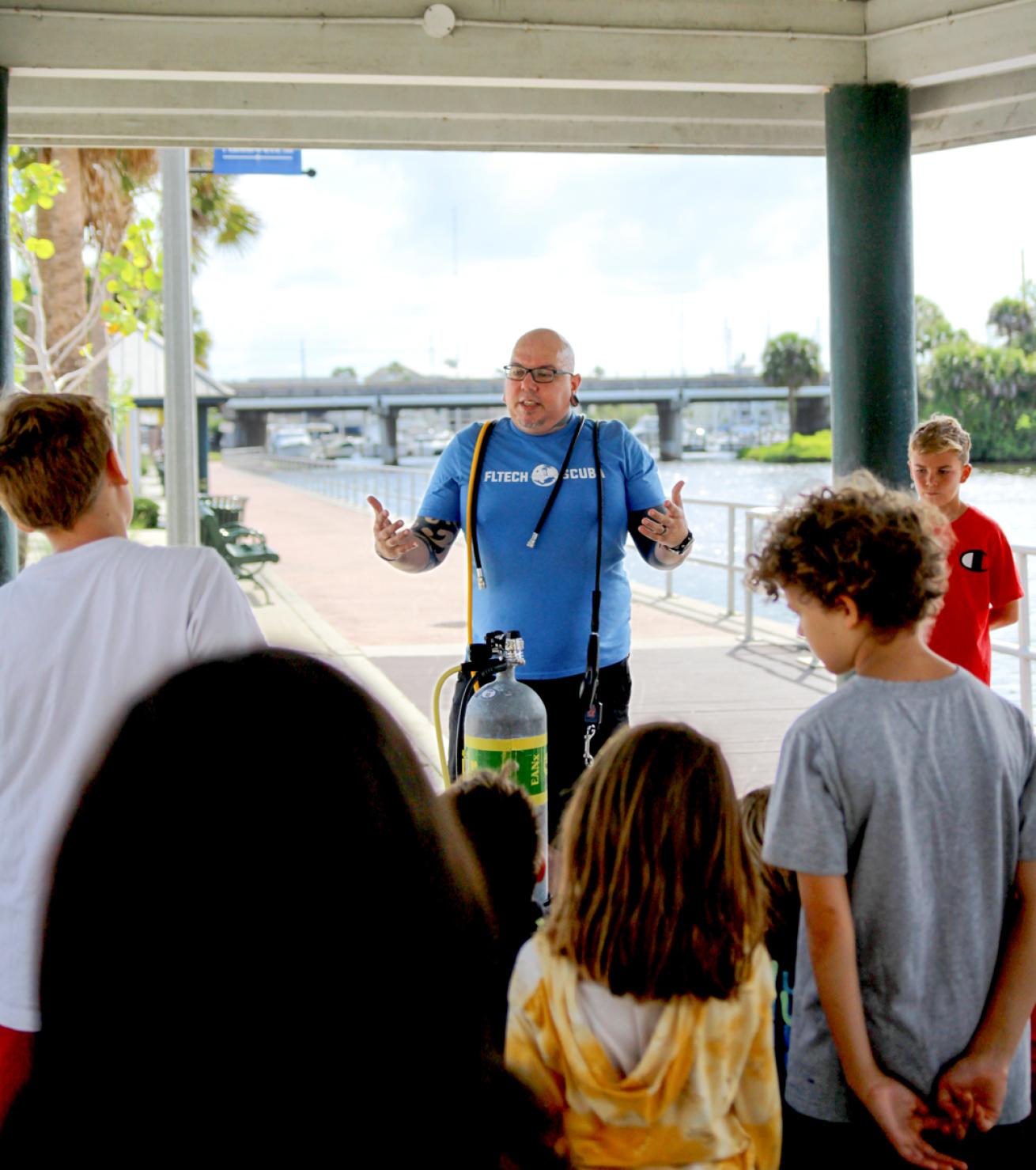
Crystal GalindoVega teaches an ocean exploration technology workshop for home-school students.
Q: When you were working on becoming a divemaster, some of your friends turned down your offer for a Discover Scuba experience because they did not know how to swim. What can other divers who also have loved ones that cannot swim or are not confident in the water do to help them feel more comfortable in the water?
A: That experience served as a wake-up call for me in a lot of ways. I didn’t meet a person that couldn’t swim until aquatic physical training in the Army. Later, when more people were comfortable sharing with me that they couldn’t swim, it motivated me to go back to help fill that gap by becoming a trained swim instructor.
One friend opted to do the Discover Dive despite not knowing how to swim. We practiced swimming before donning any gear and took all the extra time we needed to get her comfortable in the water. At the end of the session, she was so elated she shared her story and experience within her social circles, which is key to breaking down the stigma of not knowing how to swim as an adult.
Readers can invite loved ones to the pool for a stress-free environment to develop comfort in the water. Have your skin gear available to borrow and go from there.
Q: As a scuba instructor, you work with a wide variety of people, from veterans with PTSD to children with autism to people that don’t know how to swim. What do you think it is about diving that makes it restorative and empowering to such a broad array of people?
A: I am one of many who believe in the power of our connection to water. There are many theories about and understandings of this connection, rooted in everything from the water of the womb to tracing our evolution back to Earth’s oceans. I was struggling with PTSD the most when I became an Open Water student. When I became neutrally buoyant, I felt truly present in the moment for the first time in my life. I focused on my breathing and how it affected my position in the water column. This pushed out the constant racing thoughts. It was this glimpse of my natural state, without PTSD, that gave me hope to start my journey to healing. The more I share my story, help build more opportunities for others to develop through aquatics, and create shared experiences of empowerment and healing, the more my own experience is validated.
Q: What do you find most gratifying about helping people build their in-water confidence?
A: When I see somebody’s confidence build, it’s contagious. I feel it right along with them. I’m honored and humbled every time a student of mine shares their story, or posts underwater photos from their recent dive, or gets their loved ones involved for the benefit of shared experience. It’s about seeing what grows of the seeds that I’m fortunate enough to plant — and empowering others to plant their own seeds — that drives me to continue this work.
Each Sea Hero featured in Scuba Diving receives a Seiko SRPF77 watch valued at $595. For our December issue, judges select a Sea Hero of the Year, who receives a $5,000 cash award from Seiko to further his or her work. Nominate a Sea Hero at /seaheroes.

